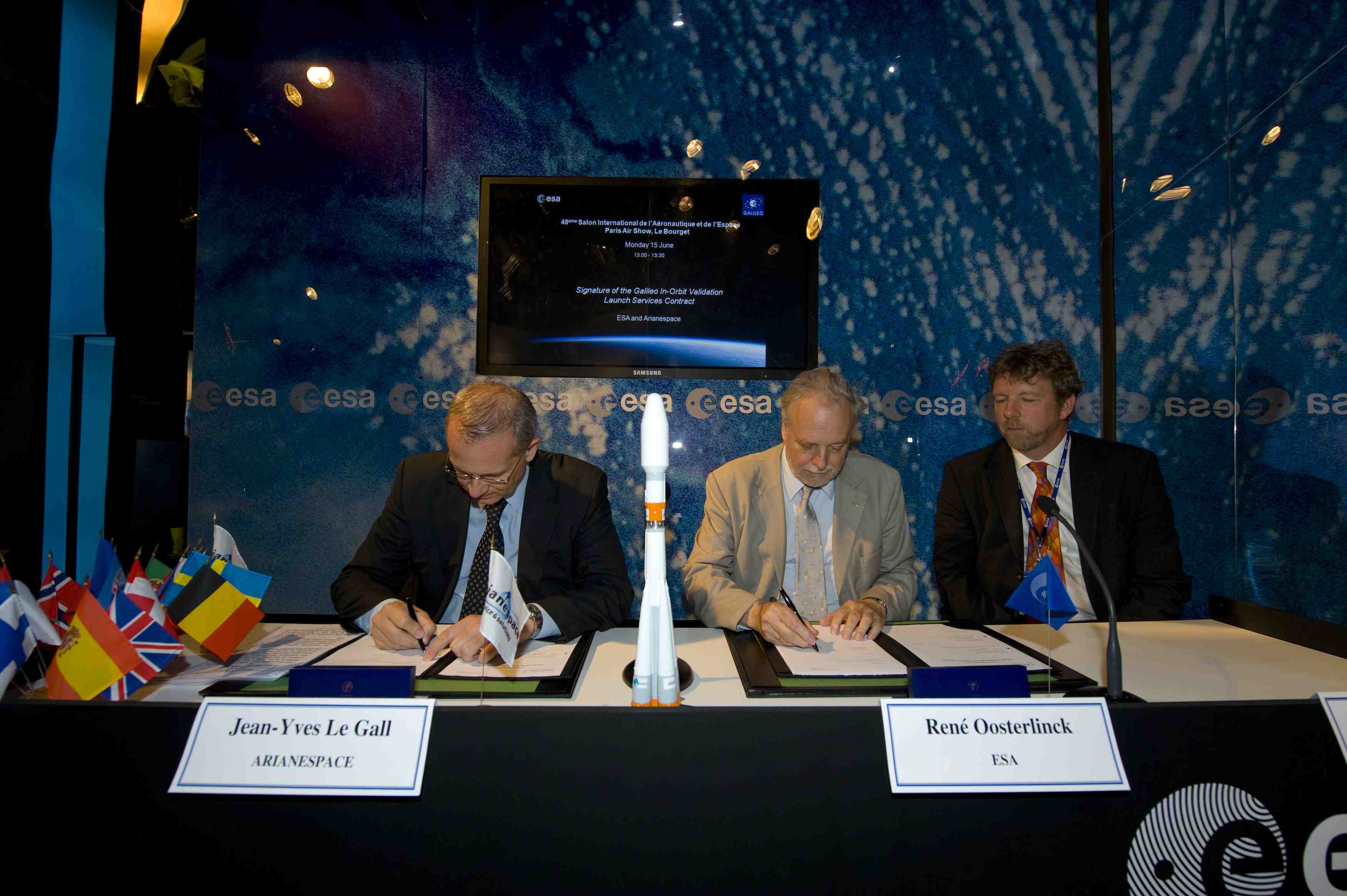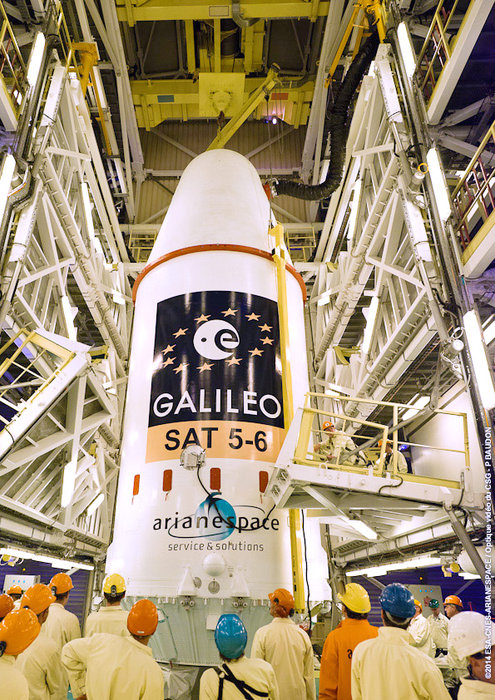European space officials and engineering teams heaved a collective sigh of relief as the second attempt to launch a pair of full operational capability (FOC) Galileo satellites appears to have succeeded yesterday (March 27, 2015).
The EU’s Galileo satellite navigation system now has eight satellites in orbit, including four in-orbit validation (IOV) satellites launched in 2011 and 2012 and the first two FOC spacecraft placed into an anomalous orbit last August.
European space officials and engineering teams heaved a collective sigh of relief as the second attempt to launch a pair of full operational capability (FOC) Galileo satellites appears to have succeeded yesterday (March 27, 2015).
The EU’s Galileo satellite navigation system now has eight satellites in orbit, including four in-orbit validation (IOV) satellites launched in 2011 and 2012 and the first two FOC spacecraft placed into an anomalous orbit last August.
Galileo 7 and 8 lifted off at 21:46 GMT (22:46 CET, 18:46 local time) Friday from Europe’s Spaceport in French Guiana on top of a Soyuz rocket.
All the Soyuz stages performed as planned, according to the European Space Agency (ESA), with the Fregat upper stage releasing the satellites into their target orbit close to 23,500-kilometer altitude, around 3 hours and 48 minutes after liftoff. Shortly afterwards they sent their first “sign of life” message to the French Space Control Center of CNES in Toulouse.
Following initial checks, run jointly by ESA and CNES the two satellites will be handed over to the Galileo Control Center in Oberpfaffenhofen, Germany, and the Galileo in-orbit test facility in Redu, Belgium, for testing before they are commissioned for operational service. This is expected occur by mid-year.
The new pair will join the six satellites already in orbit including and the first two FOC satellites (designated Galileo 5 and 6) launched August 2014 that ended up in unplanned elliptical orbits due to a failure in that launcher’s Soyuz Fregat. ESA and European national space agency engineers managed to partially correct the latter orbits over a number of months, but the Fregat problem and subsequent investigation delayed furthrer Galileo launchs until Friday.
"The deployment of the Galileo constellation is restarting with this successful launch," said Jean-Jacques Dordain, director-general of ESA. "The tests in orbit of satellites 5 and 6 have demonstrated the quality and performance of the satellites, and the production of the following ones is well on track. Good news for Galileo."
Four more satellites are in testing or final integration and scheduled for launch later this year.
"With six new satellites expected to be in orbit by year’s end, we are now approaching the cruise mode of production, testing, and deployment of the satellite constellation," said ESA’s director of Galileo and Navigation-related Activities, Didier Faivre
Named “Adam” and “Anastasia” as the result of a drawing competition among European schoolchildren, < https://www.insidegnss.com/node/3794>the two Galileo FOC were developed and built by OHB System AG, in Bremen, Germany.
Observing the launch live from Bremen, Marco R. Fuchs, CEO of OHB SE, said, “This was a very emotional moment for all of us who eagerly watched the launch and the activities of the next few hours in Bremen, Toulouse, Kourou and everywhere around the world. I am thrilled to have learned that both satellites have reached their target orbit. My thanks go out to the entire Galileo team for a job well done.”
Ingo Engeln, a member of OHB System AG’s Management Board, was present during the launch in Kourou: “The moment in which the launcher lifts off is an indescribable feeling. But with our responsibility for the satellites, the tension did not ease until a few hours after the launch when we knew that the satellites are functional in orbit.”
Aliac Jojaghaian, head of the OHB team in charge of the early operation phase at the CNES control center in Toulouse was very satisfied. “We are all very grateful that the launch was completed without a hitch this time,” he said. “Both satellites are in the right orbit, they have the correct alignment, the solar panels have unfolded properly and we have contact with Adam and Anastasia.”
The Galileo control center in Oberpfaffenhofen will be assuming responsibility for Anastacia on April 5, 2015 and for Adam on April 6, 2015 on behalf of ESA and the European Commission. Later, the ground station in Fucino, Italy, takes over the commissioning of the payload. The satellites in orbit will be joined over the next few years by a further 18 Galileo FOC navigation satellites for which OHB is also the responsible industrial prime contractor.
As set by the European Commission, the objective is to deliver, by 2016, a package of Initial Services, including a free Open Service, an encrypted Public Regulated Service and a Search And Rescue function to be transferred to the responsibility of the European GNSS Agency, GSA.
A full system capability that includes an encrypted commercial service benefiting from 24 operational satellites and six spares is expected to be in place by 2020.
Galileo is the European Union’s own global satellite navigation system. It will consist of 30 satellites and their ground infrastructure.
The definition, development and In-Orbit Validation phase were carried out by ESA, and co-funded by ESA and the European Commission. This phase created a mini constellation of four satellites and a reduced ground segment dedicated to validating the overall concept.
The Full Operational Capability phase is fully funded by the European Commission. The Commission and ESA have signed a delegation agreement by which ESA acts as design and procurement agent on behalf of the Commission.






